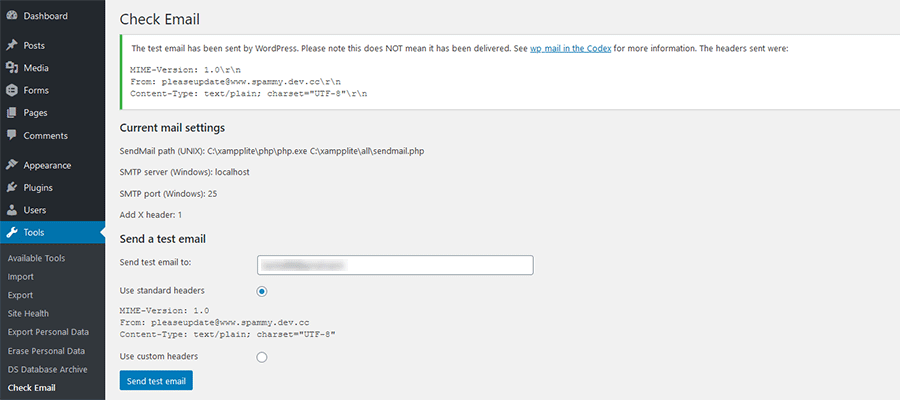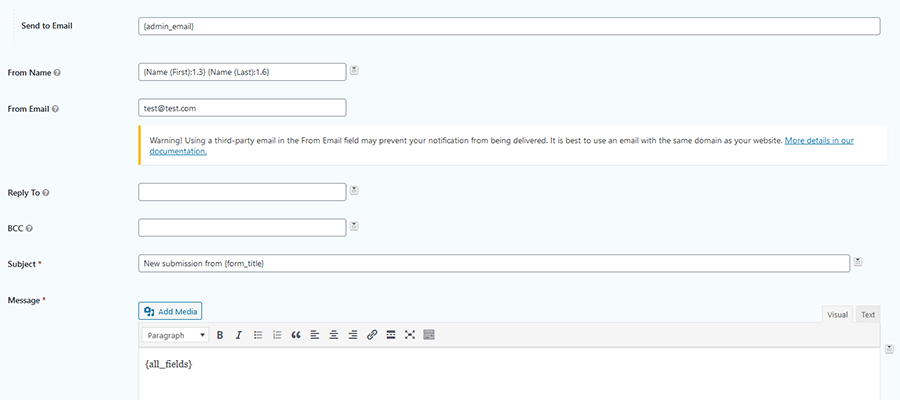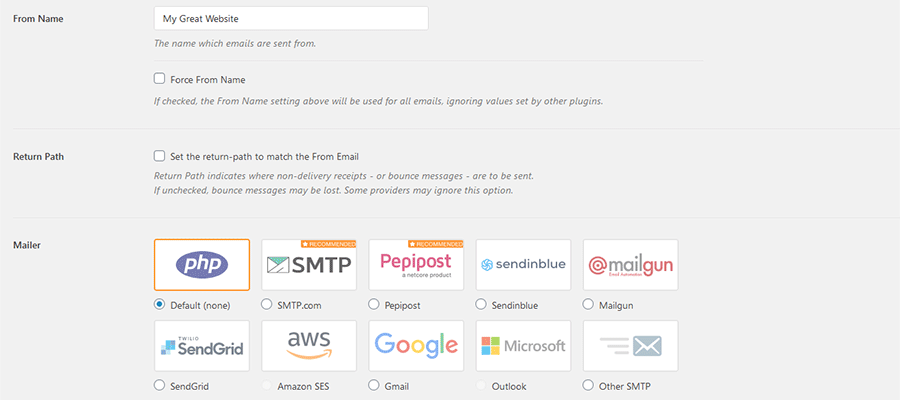It seems inevitable. Emails generated from a WordPress website stop arriving – or get thrown into a spam folder. Email, as a certain grumpy designer once said, is the worst.
Still, these messages can be important. They might be from prospective clients filling out a contact form, automated security notices or even eCommerce orders. If they aren’t being delivered, we (or our clients) are missing out.
Quite often, the task of troubleshooting undelivered or spam emails falls to web designers. The process of tracking down the issue may seem daunting. After all, we’re designers and developers – not IT gurus.
But the solutions may be easier than you think. Let’s take a look at what causes WordPress website email issues, along with ways to get those messages flowing again.
Before you can fix website email delivery issues, you’ll have to figure out the source of the problem. While there are any number of things that can go wrong, it really boils down to two culprits: the web server and overzealous spam filtering.
Is the Web Server Sending Out Emails?
The first thing to look at is whether the web server is actually sending out email messages. This may not be the most common issue, but there are instances where something is preventing that email from being sent.
WordPress has its own mail function, which relies on PHP’s built-in mail capabilities. Sometimes, a web host may block access to PHP mail due to a security setting or even as a response to a spam filter trigger.
Troubleshooting and Fixing Web Server Email Issues
Some plugins, such as Gravity Forms, provide helpful error messages that make tracking down the issue easier. Alternatively, installing a plugin such as Check Email will allow you to determine whether email is being sent.
From there, utilize a mail logging plugin such as WP Mail Logging to see any errors associated with your site’s email. This will enable you to take a deeper look into the situation.
There’s also the possibility of interference from a plugin. For instance, there are plugins that are designed to block or otherwise manipulate email messages sent from a website. In this case, try disabling these items to see if that fixes the issue.
If all else fails, a discussion with your web host’s technical support may be in order. They should be able to assist you in hunting down the source of your server troubles.

Are Website Emails Being Caught in a Spam Filter?
Spam filters are increasingly causing issues for email sent from websites. It’s understandable, as spam itself is a massive problem. As such, filters are becoming stricter about which messages are allowed to pass through.
The other part of the equation is that some mail service providers are more finnicky than others. What works fine with Gmail may not play nicely with Outlook.com, or vice-versa. And, big as they may be, those are just two of literally thousands of providers out there.
Getting WordPress Website Emails to Work with Spam Filters
Even with the differences between email providers, the process of getting your website’s email accepted by spam filters is fairly straightforward.
Let’s talk about three simple solutions. Each one is a step up, depending on the severity of the issue.
Change the “From” Address:
When it comes to email forms, it used to be fairly common to set the notification from address to that of the person filling out the form. However, that practice is bound to draw the ire of spam filters these days.
The first, and quickest fix, is to simply change the from address to one that uses your website’s domain. Ideally, you’d have an email account created just for this purpose. Something generic, such as [email protected] is a common example.
Then, set the reply-to address to that of the user submitting the form. In theory, this allows the email to pass through a spam filter, while enabling you to easily reply to the sender.
This solution tends to work best if you’re using your web host for email service as well. If you’re using a third-party email provider, even one that uses your site’s domain, messages could still be rejected.

Utilize a WordPress SMTP Plugin
Moving another step up the ladder, a SMTP plugin allows website email to be sent directly through a mail server – skipping the web server altogether. By cutting out the “middle man”, this tends to ensure that the mail server sees the messages being sent as legitimate.
There are a number of options here, with WP Mail SMTP, Easy WP SMTP and Post SMTP Mailer/Email Log being among the most widely-used plugins. Each has their own bells and whistles, but in essence they perform the same basic function.
Again, having a dedicated email account for this purpose is recommended. With that, you’ll need the following information regarding that email address:
- Password;
- Outgoing (SMTP) mail server name and port number;
- Type of encryption (SSL/TLS);
- Authentication method;
Implementing this solution is a matter of choosing the SMTP plugin you want and configuring it for your email account. From there, you’ll want to perform a few tests to ensure that the mail is being delivered. This can be done either through a plugin’s built-in testing functionality or by submitting a contact form on your website.
It’s worth noting that some email providers may require you to permit your website to connect to the mail server. Gmail, for example, has a “less secure apps” setting for this purpose. If you’re frequently running into authentication errors, this may be the cause.

Employ a Mail Delivery Service
A mail delivery service is a great option for a couple of different situations. First, they’re the go-to solution when you’ve had problems working with your own mail server. They’re also recommended if the email generated by your website is mission-critical.
These services, including providers such as Mailchimp, Mailgun and SendGrid offer tools that better ensure that email gets to its final destination. Free tiers of service are offered, but higher volume websites may need a paid account.
The range of what a mail delivery service can do varies. Some providers offer their own SMTP servers, while others will authenticate with your existing mail server via an API. In some cases, you may be required to validate domain ownership by adding records to your DNS.
If you do run into trouble, a mail delivery service should provide you with actionable information. You’ll have access to reports that will fill you in on info such as bounce rates and spam scores.
Several SMTP plugins integrate with these services, while others (including Mailgun and SendGrid) do have their own standalone plugins.
Solve WordPress Email Delivery Issues
WordPress website email issues have become commonplace. The key to troubleshooting and ultimately solving the issue is determining the source. Whether it’s a web server problem or a strict spam filter, there are a number of WordPress plugins you can use to figure things out and get them working again.
Related Topics
Top